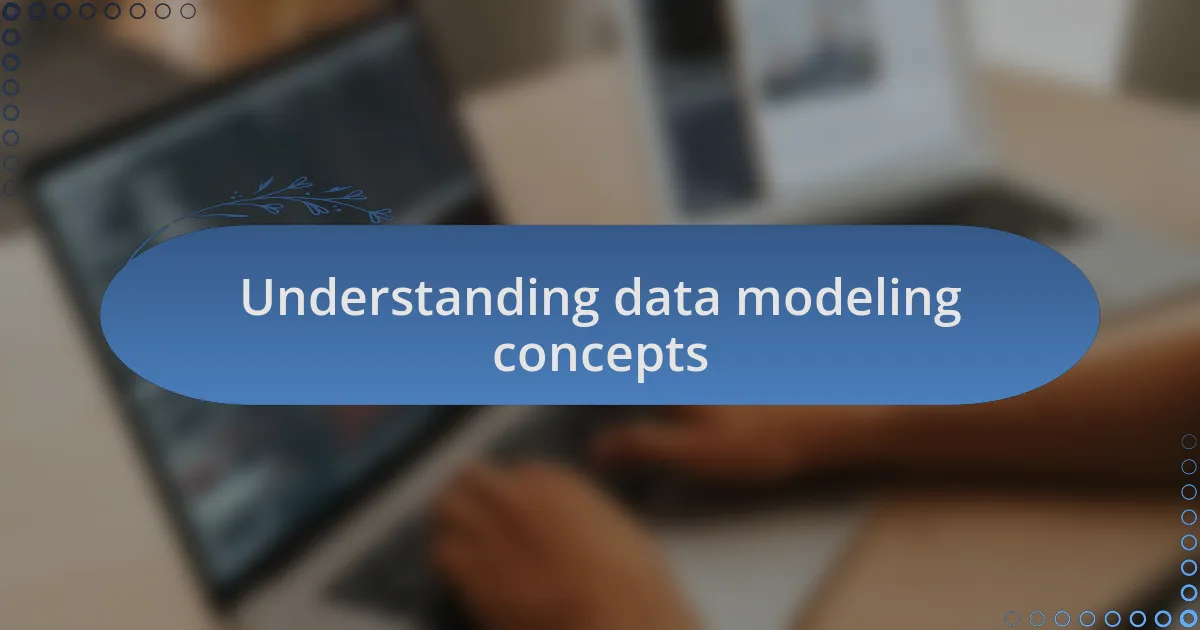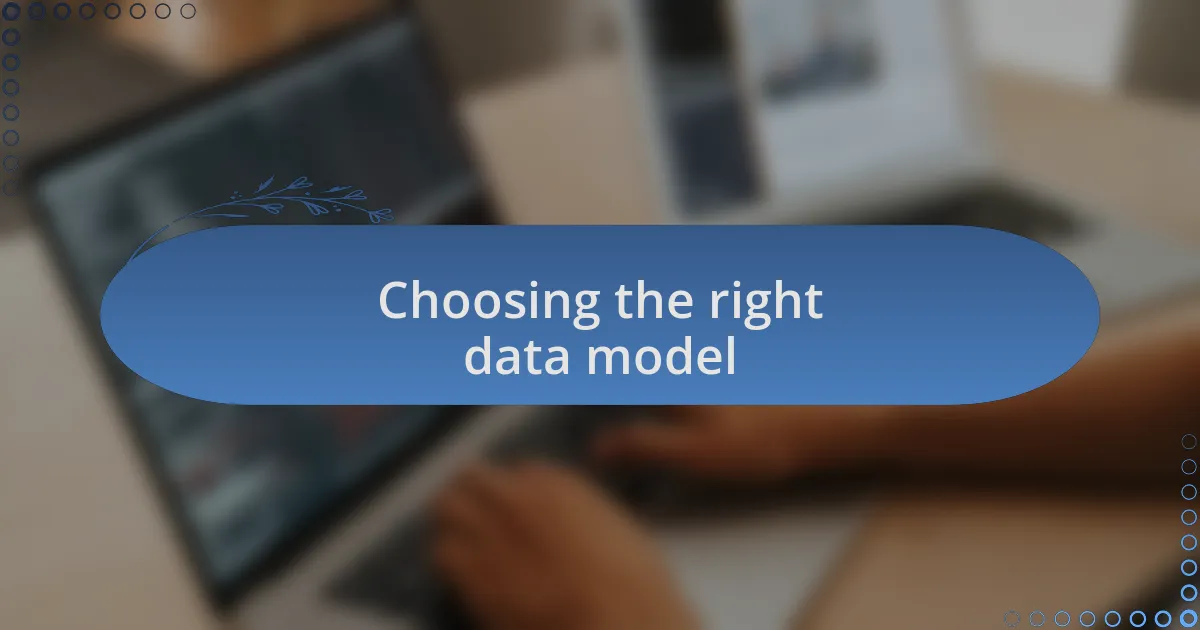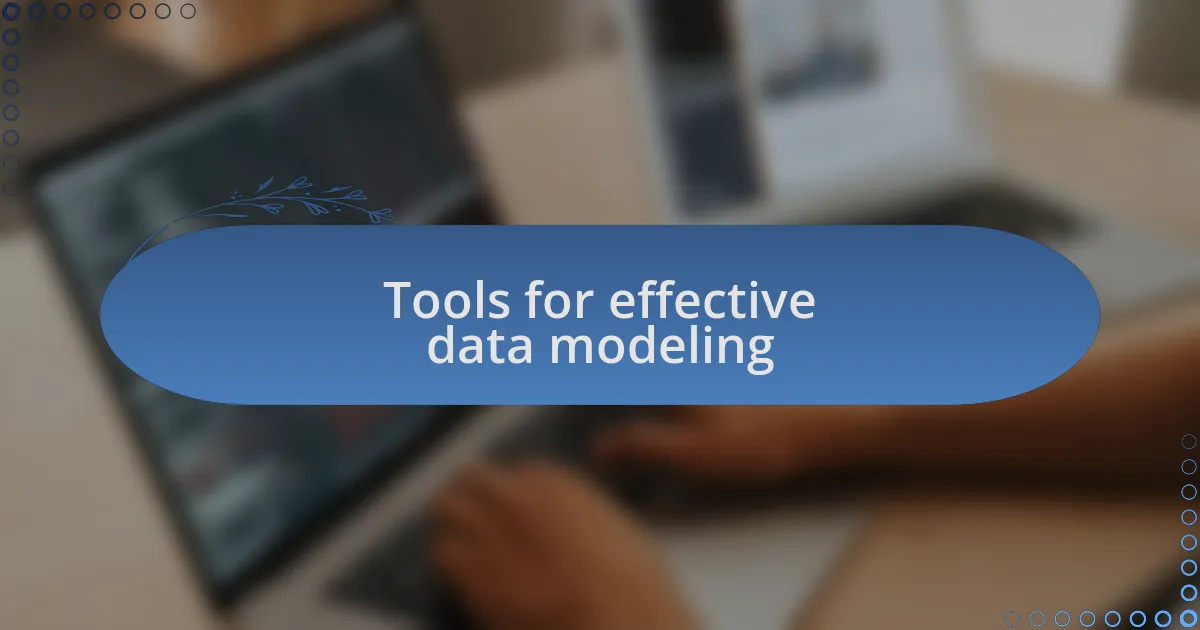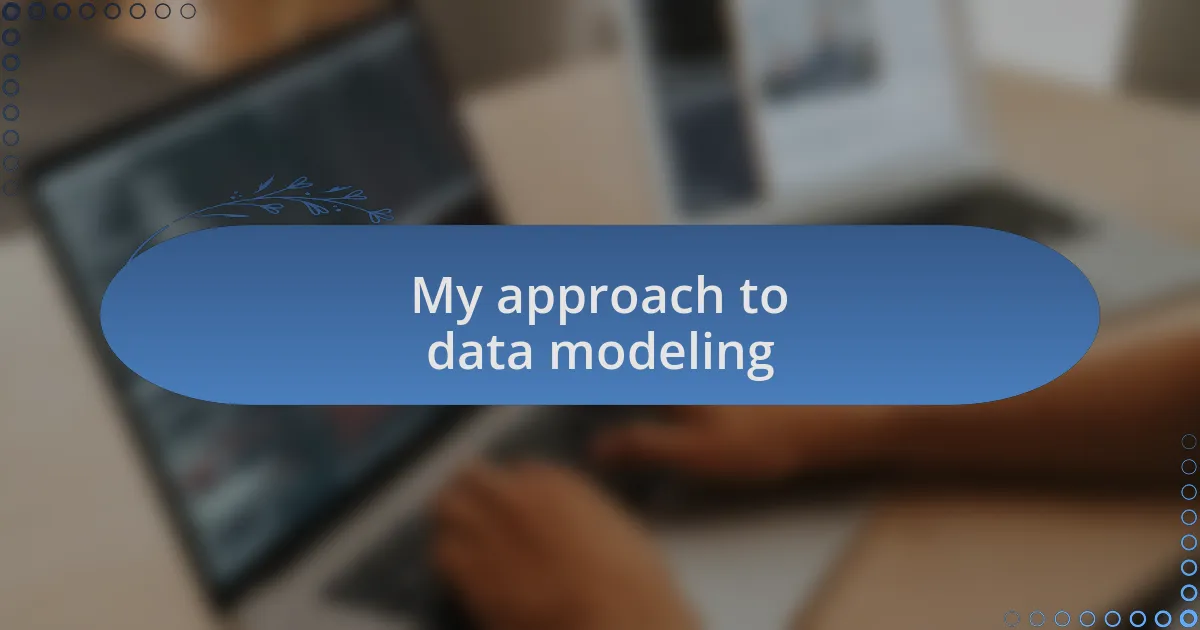Key takeaways:
- Data modeling is essential for effective data management and scalability in web development projects.
- Choosing the appropriate data model depends on the application’s specific needs; relational models work well for structured data, while NoSQL models offer flexibility for unstructured data.
- Utilizing the right tools, such as ERDPlus or DbSchema, enhances the visualization of data structures and improves team collaboration.
- Prioritizing user needs and encouraging iterative feedback during the modeling process leads to more relevant and effective data solutions.

Understanding data modeling concepts
Data modeling is foundational to any robust web development project. I remember the first time I encountered a relational database; it felt like solving a puzzle where each piece had to fit perfectly together. Have you ever thought about how data models structure and relate your information? This intricate connection makes it easier to retrieve, update, and manage your data effectively.
At its core, data modeling involves mapping out how data elements interact within your system. I’ve often found that a well-structured model not only simplifies development but also eases future scalability. Can you imagine trying to scale a poorly designed database? It’s like trying to expand a house built on a shaky foundation—challenging and often disastrous.
Moreover, understanding concepts like entities, attributes, and relationships can transform your approach to data design. For instance, I once worked on a project where we had to redefine our entity relationships mid-development, which taught me the vital importance of getting it right from the start. There’s a real sense of clarity and control when your data model mirrors your business logic; it allows for more effective problem-solving down the line.

Choosing the right data model
Choosing the right data model is crucial to the success of your project. I recall working on a web application where we initially chose a document model for unstructured data. That approach seemed logical at first, but as the project evolved, I realized the limitations when trying to implement complex relationships. The decision to switch to a relational model turned out to be a game-changer. Have you ever felt the weight of a wrong decision in a project? It can be daunting, but getting it right lays the groundwork for everything that follows.
When evaluating data models, it’s essential to consider the specific needs of your application. I’ve often asked myself whether the data is more structured or unstructured. For instance, if you’re building an e-commerce site, a relational model might offer the precision needed to manage product inventories and customer relationships effectively. In contrast, a NoSQL model could be more appropriate for general content management, allowing for greater flexibility. It’s about balancing your immediate needs with the long-term vision for your application.
Ultimately, the choice between different data models shouldn’t be taken lightly. I’ve experienced the frustration of grappling with performance issues due to an ill-suited model, and it can be a heavy burden. My advice? Take the time to visualize your data interactions before choosing a model. Imagine how your users will interact with the data. This foresight can prevent headaches down the road. Trust me, getting this right is empowering.

Tools for effective data modeling
Tools for effective data modeling can make a world of difference in how smoothly a project unfolds. I’ve had moments in my career where I turned to tools like ERDPlus and Lucidchart, which truly simplified the visualization of complex relationships between entities. Have you ever struggled to communicate your data structure to stakeholders? Visual aids can bridge that gap beautifully.
When I first started working with data models, I often relied on Microsoft Visio for designing diagrams. However, I quickly learned that tools like DbSchema offered more versatility, especially for relational databases. This switch was eye-opening; suddenly, modeling became less of a chore and more of a creative process. It’s fascinating how the right tool can shift your perspective and increase productivity, isn’t it?
In my experience, investing in the right tools can drastically minimize errors and improve collaboration within your team. For instance, using software like Tableau not only helps in visualizing data but also makes presenting findings much more engaging. I remember a particular project where we transformed raw data into compelling visuals, and the difference in stakeholder engagement was palpable. Have you seen how effective storytelling can change the dynamics of a presentation? It’s remarkable what the right tools can achieve.

My approach to data modeling
When it comes to data modeling, my approach is rooted in understanding the business context first. I remember grappling with a complex project where technical jargon clouded the team’s comprehension. By prioritizing conversations over complex documentation, we uncovered key insights that shaped our model more effectively. Have you ever noticed how clarity can light up an otherwise daunting task?
As I dive into modeling, I constantly ask myself, “What are the end-users really needing?” I typically begin with user stories or scenarios, mapping out how different entities interact from their perspective. This has dramatically heightened the models’ relevance and usability in real-world applications. It’s rewarding to find that balance between technical accuracy and user-centric design, isn’t it?
Iteration is a cornerstone of my approach. I’ve found that sharing early drafts fosters feedback and sparks conversations that can lead to surprising revelations. In one project, a simple suggestion from a developer led us to streamline a convoluted relationship into an elegant solution. How transformative is it to incorporate team input in crafting something robust and functional? It’s a game changer, for sure!